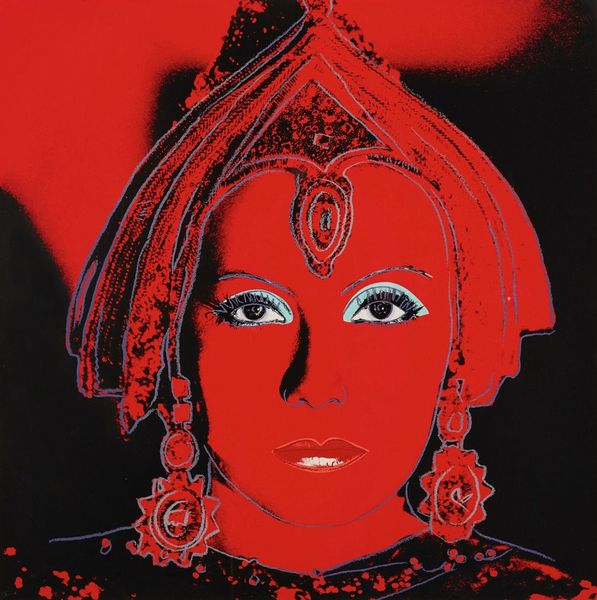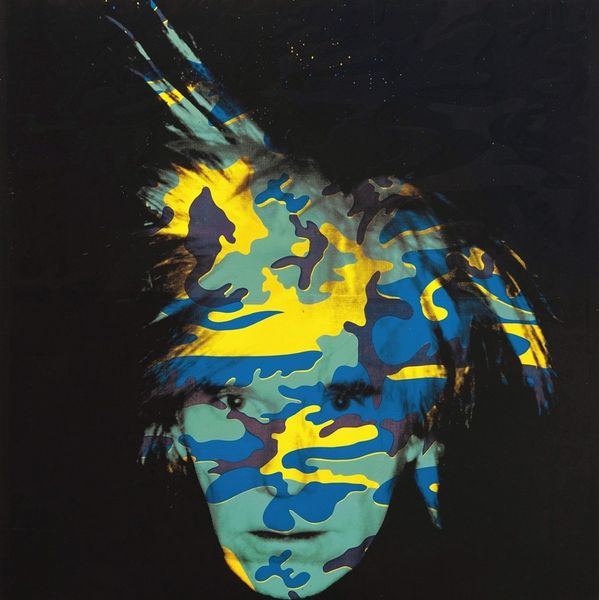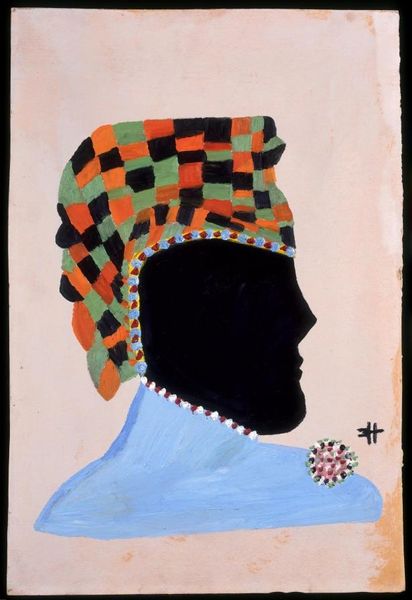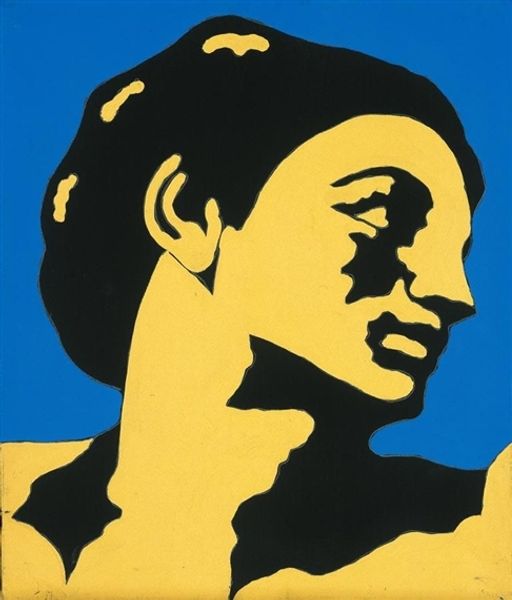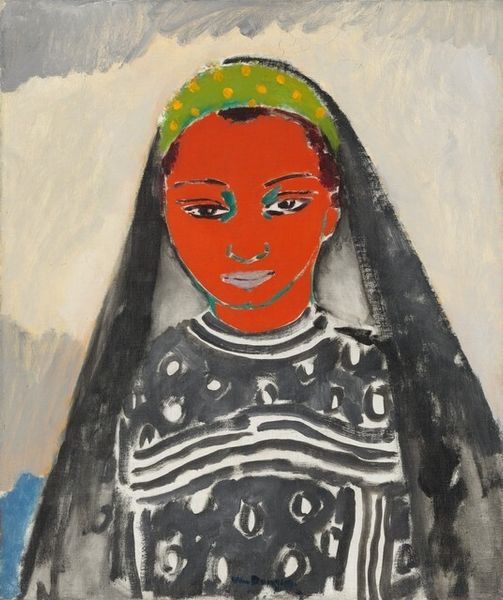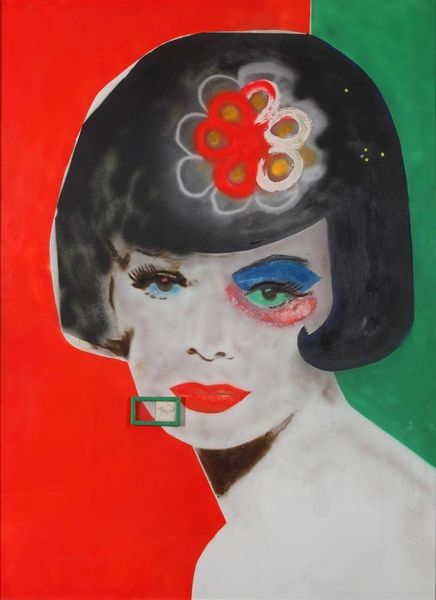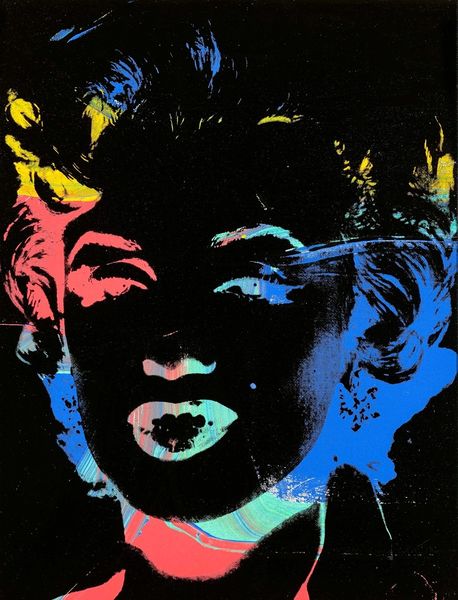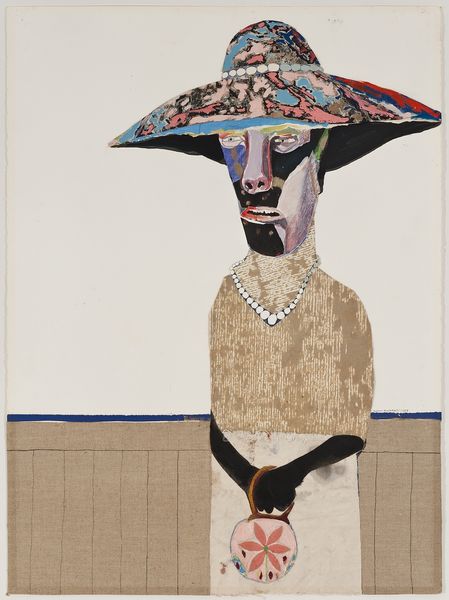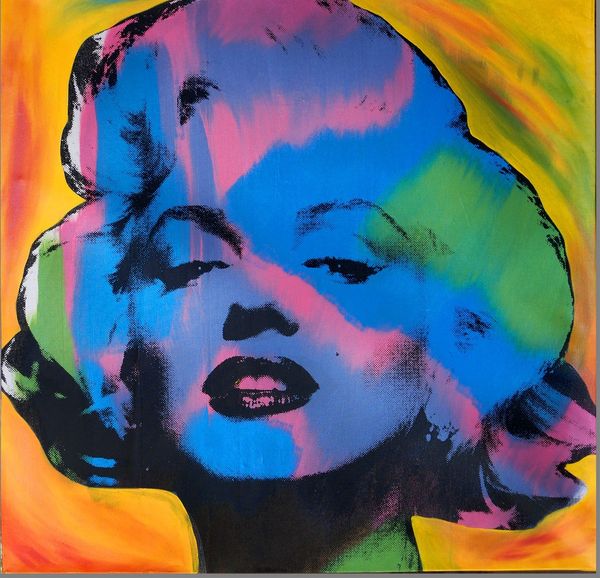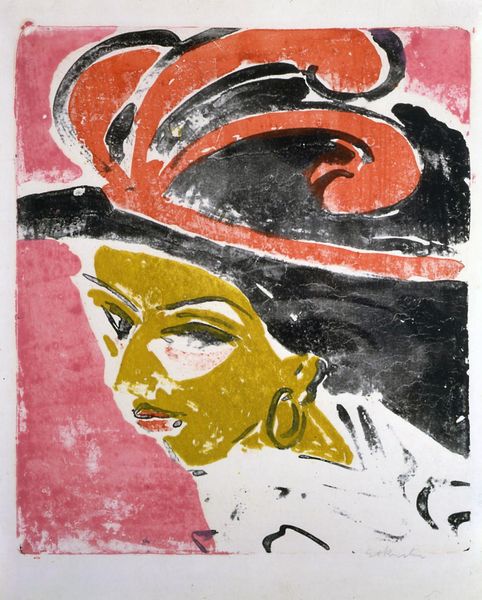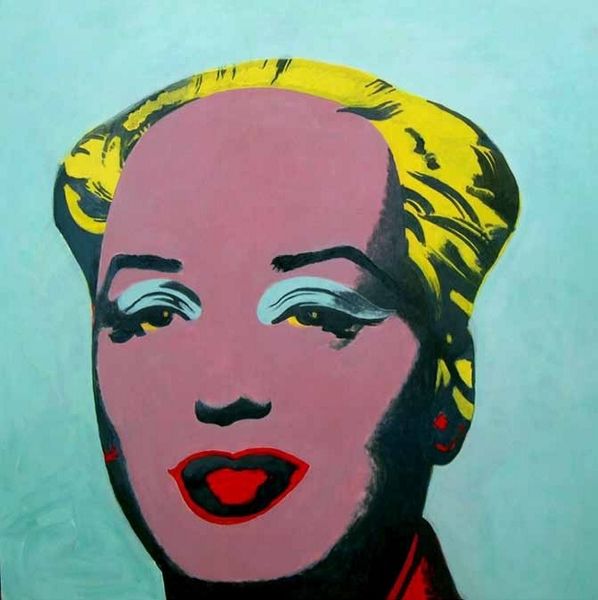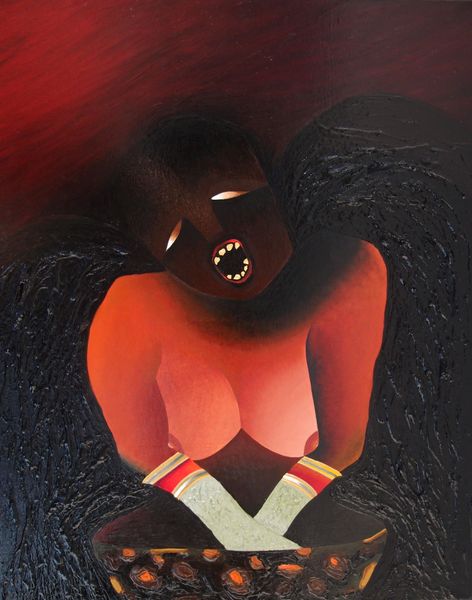
Copyright: Modern Artists: Artvee
Curator: Standing before us, we have Andy Warhol's 1981 piece "Mammy" from his "Myths" series, created using acrylic and silkscreen. Editor: It’s arresting, isn't it? The stark black background...the way the neon outlines pop, almost violently. There’s something deeply unsettling about it. Curator: The process is so revealing here. Notice the flatness of the silkscreen, almost mechanical, and the layered acrylic adding depth. Warhol deliberately uses commercial printing methods; this democratizes art, making it reproducible, accessible. The ‘Mammy’ image itself was lifted directly from popular culture; he appropriated the already appropriated. Editor: Exactly! Warhol isn't just passively reproducing an image; he’s actively engaging with the history of racial caricature in America. The "Mammy" archetype is rooted in slavery and Jim Crow, a deeply problematic, and enduring image of Black women as docile domestic servants. It's fascinating how he amplifies the image and exposes the underlying ideology and consumerism. Curator: Consider the materiality too. Silkscreen allows for repetition and the garish colour palette, a signifier of the mass-produced, cheap, disposable nature of these images. He is using materials familiar to consumers as well. Editor: The oversized hoop earrings, the bright red lips – it all screams performative Blackness filtered through a white gaze. And by calling it “Myth,” Warhol isn’t just immortalizing it; he's implicating it in the larger American mythology of race and representation, showing how this stereotypical caricature is deeply embedded in American popular culture, and what part it played in dehumanizing Black Americans. Curator: Absolutely. We can also reflect on how Warhol as a celebrity was manufactured by pop culture as well, highlighting how capitalist practices contribute to racial myth-making. He questions authenticity and originality while contributing to commodification. Editor: Looking at "Mammy", I think we’re forced to confront the uncomfortable truth about how deeply ingrained these harmful images are, not just in history, but in our present-day consumer culture. Curator: A testament to art’s power as a catalyst for hard, much-needed conversations, even after decades, about both creation and reception. Editor: Agreed. A necessary, and perhaps uncomfortable, image reflecting deep social inequalities and highlighting identity through this controversial stereotype.
Comments
No comments
Be the first to comment and join the conversation on the ultimate creative platform.
